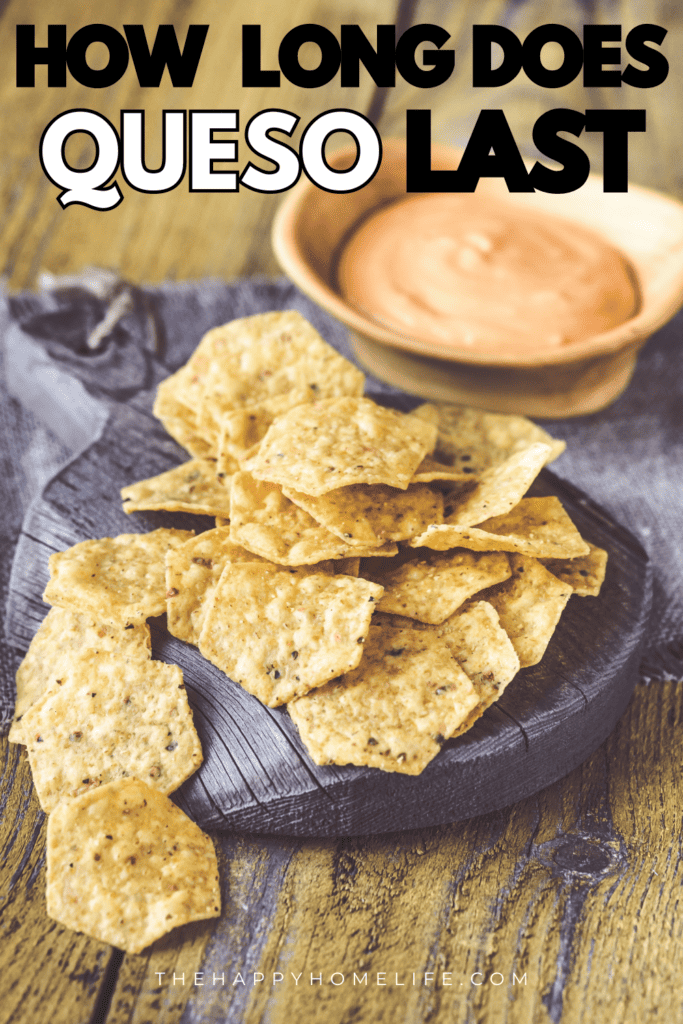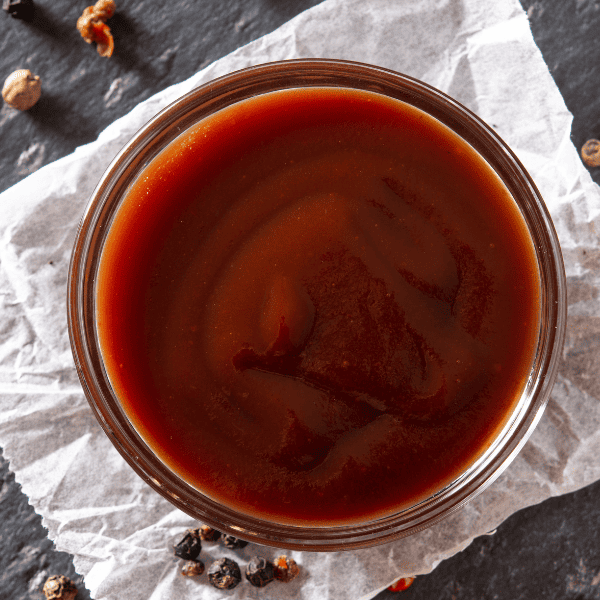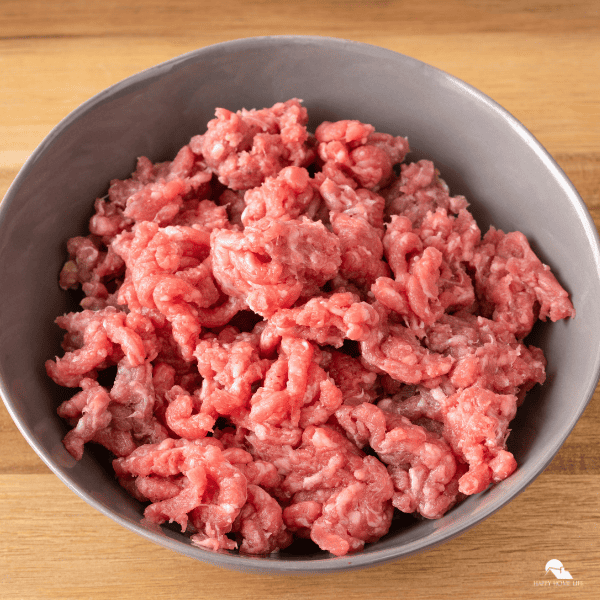Do you ever wonder, “how long does queso last?” Queso, or cheese dip, is a delicious condiment that adds a flavorful kick to any meal. It can be a great addition to your favorite recipes, but how long can it really last before it goes bad?
Knowing how long queso lasts can help you make sure you are serving the freshest and safest product. In this post, we’ll discuss how long queso can last before it needs to be discarded.

What is Queso?
Queso, a term that comes from the Spanish word for cheese, is a popular Mexican dish that has gained popularity around the world. It is a creamy and savory cheese dip that is typically made with melted cheese, peppers, and spices. Queso can be enjoyed as a standalone dip with tortilla chips or used as a topping for various dishes such as tacos, nachos, or even burgers.
Now, let’s address the burning question: does queso go bad? Like any food item, queso has a limited shelf life. However, if stored and handled properly, it can last for a considerable amount of time. Understanding how to store queso is key to ensuring its longevity.
To store queso properly, keep it refrigerated at all times. The cold temperature of the fridge helps slow down the growth of bacteria, ensuring that your queso stays fresh and safe to eat for as long as possible. It is also recommended to keep the queso in an airtight container to prevent air exposure and minimize the risk of contamination.
So, while queso may not last forever, with proper storage, you can extend its shelf life and enjoy this delicious cheese dip for longer. In the next sections, we will dive deeper into the specific shelf life of queso, how long it lasts in the fridge, and the signs of spoiled queso to look out for.
How Long Does Queso Last in the Fridge?
So, how long can you expect queso to last in the fridge? On average, homemade queso can stay fresh for up to 5 days. This depends on the ingredients, though, as the addition of meat can increase the rate of deterioration.
However, store-bought or commercially made queso typically has a longer shelf life, lasting around 1-2 weeks. It’s always a good idea to check the expiration date on the packaging for a more accurate timeline.
How Long Is Jarred Queso Good for After Opening?
After you’ve cracked open that jar of delicious queso, you may be wondering how long it will stay good for. Does queso go bad after opening? The answer is yes, it does. Jarred queso can last for a certain period of time after it has been opened, but it’s important to be aware of the timeline to ensure you’re enjoying it at its best.
Typically, jarred queso will stay good for about 7-10 days after opening. However, you should check the packaging for specific guidelines, as this can vary depending on the brand and ingredients. It’s also important to keep the queso refrigerated at all times.
When it comes to determining if your jarred queso has gone bad, trust your senses. If you notice any mold, off smells, or an unusual texture, it’s best to err on the side of caution and discard it. Consuming spoiled queso can lead to food poisoning and unpleasant gastrointestinal symptoms.
To ensure the longest possible shelf life for your jarred queso, make sure to handle it properly. Always use a clean utensil when scooping out the queso to avoid introducing bacteria. Seal the jar tightly after each use to minimize air exposure.
Following these tips will help you enjoy your jarred queso to the fullest and avoid any unpleasant experiences.

Signs of Spoiled Queso
We all know that food has a limited shelf life, and queso is no exception. So how can you tell if your queso has gone bad? There are a few key signs to look out for.
Firstly, trust your nose. If your queso has developed an off smell, it’s a strong indication that it has gone bad. Fresh queso should have a pleasant aroma, so any foul or unusual odors are a definite red flag.
Next, check for any visible signs of mold. If you spot any green, white, or black patches on the surface of your queso, it’s best to discard it immediately. Mold is a clear indicator of spoilage and can be harmful if consumed.
Another sign of spoiled queso is a change in texture. If your once smooth and creamy queso has become grainy, clumpy, or separated, it’s likely that it has started to spoil. A change in texture can be a result of bacterial growth or chemical breakdown.
Lastly, use your taste buds as a final indicator. If your queso tastes sour, bitter, or has a strange, unpleasant flavor, it’s time to say goodbye to that batch. Spoiled queso can lead to food poisoning and should not be consumed.
Remember, queso does go bad, so it’s important to keep an eye out for these signs of spoilage. By doing so, you can ensure that you’re always enjoying fresh and safe queso with every bite.
Proper Storage of Queso
Now that we’ve covered the shelf life of queso and how long it can last in the fridge, let’s dive into the important topic of proper storage. Knowing how to store your queso correctly can make a big difference in how long it lasts before going bad.
First and foremost, queso should always be stored in the refrigerator. The cold temperature helps to slow down the growth of bacteria, which is crucial in ensuring the freshness and safety of your queso. Leaving queso out at room temperature for an extended period of time can lead to bacterial growth and spoilage.
To keep your queso fresh for as long as possible, it is recommended to transfer it to an airtight container before placing it in the refrigerator. This helps to prevent air exposure, which can lead to contamination and shorten the shelf life of your queso. Using an airtight container also helps to maintain the texture and flavor of the queso, ensuring that it stays creamy and delicious.
Another important aspect of proper storage is to keep your queso away from other strong-smelling foods. Queso can easily absorb odors from its surroundings, which can alter its flavor and make it less enjoyable. So, be sure to store your queso away from pungent foods such as onions or garlic.
By following these tips for proper storage, you can maximize the shelf life of your queso and continue to enjoy its mouthwatering taste for as long as possible. So, take the time to store your queso correctly and savor every cheesy bite!
Can You Freeze Queso?
It’s a question that many queso lovers have pondered. While queso can be stored in the refrigerator to extend its shelf life, freezing it is a bit trickier. Freezing can alter the texture and consistency of queso, so it’s important to consider the effects before deciding to freeze your leftover queso.
So, does queso go bad when frozen? Technically, no. Freezing can help preserve the quality of the queso for a longer period of time. However, it’s important to note that the texture of the queso may change once thawed. Freezing can cause the queso to become grainy or separated, which can affect its overall taste and enjoyment.

If you do decide to freeze your queso, make sure to do it properly. Transfer the queso to an airtight container or freezer bag, removing as much air as possible to prevent freezer burn. Label the container with the date to keep track of how long it has been frozen.
When you’re ready to enjoy your frozen queso, thaw it in the refrigerator overnight. Avoid thawing it at room temperature, as this can increase the risk of bacterial growth. Once thawed, give it a good stir to reincorporate any separated or grainy textures.
While freezing queso can be done, it’s best to consume it within a few weeks of freezing for the best taste and texture. So, if you have leftover queso that you can’t finish in time, freezing can be a viable option to make it last longer. Just keep in mind the potential changes in texture and make sure to store it properly.
Tips for Making Your Queso Last Longer
If you want to make your queso last longer and avoid any unnecessary waste, here are a few tips to keep in mind. First, always store your queso in an airtight container. This will prevent air exposure and minimize the risk of contamination, keeping your queso fresh for a longer period of time.
Additionally, be mindful of how you handle your queso. Always use a clean utensil when scooping out the queso to avoid introducing bacteria. Seal the container tightly after each use to maintain its freshness.
Another tip is to portion your queso into smaller containers. This way, you can defrost only what you need and avoid repeated thawing and refreezing.
Lastly, consider freezing your queso if you can’t finish it in time. While freezing may alter the texture slightly, it can help extend the shelf life of your queso. Just make sure to store it properly and consume it within a few weeks for the best taste and texture.
By following these tips, you can enjoy your queso for longer and reduce unnecessary waste. So go ahead, savor the deliciousness of queso while making it last!
Dip Recipes You’ll Love
If you enjoy queso (like smoked queso dip) and other dips, you might like one of these:






